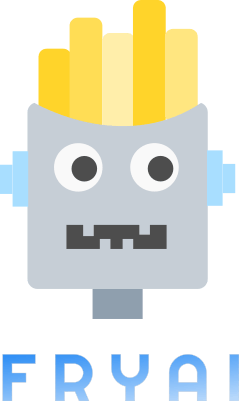- FryAI
- Posts
- Image generation goes “bananas"
Image generation goes “bananas"

The future’s loading fast, but you’re already in it. Here are today’s smartest stories, fried and served hot. 🔥
🤯 MYSTERY AI LINK 🤯
(The mystery link can lead to ANYTHING AI-related: tools, memes, articles, videos, and more…)
Effortless Tutorial Video Creation with Guidde
Transform your team’s static training materials into dynamic, engaging video guides with Guidde.
Here’s what you’ll love about Guidde:
1️⃣ Easy to Create: Turn PDFs or manuals into stunning video tutorials with a single click.
2️⃣ Easy to Update: Update video content in seconds to keep your training materials relevant.
3️⃣ Easy to Localize: Generate multilingual guides to ensure accessibility for global teams.
Empower your teammates with interactive learning.
And the best part? The browser extension is 100% free.
Today’s Menu
Appetizer: Google drops Nano Banana Pro for image generation 🍌
Entrée: Detecting AI images just got way easier 👁️
Dessert: White House prepares order to block state AI regulations 👨⚖️
🔨 AI TOOLS OF THE DAY
💬 Snippets AI: Manage your AI prompts. → Check it out
🤝 Sendbird: The AI customer experience platform. → Check it out
GOOGLE DROPS NANO BANANA PRO FOR IMAGE GENERATION 🍌
What’s new? Google DeepMind has launched Nano Banana Pro, a major upgrade to its image-generation tech that offers far more accurate visuals, better text rendering, and deeper real-world reasoning.
How does it work? Nano Banana Pro (powered by Gemini 3 Pro) can turn almost any idea—sketches, notes, data, recipes, or descriptions—into studio-quality images. It connects to real-time information through Google Search, so it can visualize weather, sports, or facts on the fly. It also produces legible, multilingual text directly inside images, making it useful for posters, infographics, and storyboards. The model can blend up to 14 images while keeping people’s identities consistent, convert drawings into realistic prototypes, adjust lighting or camera angles, and export in up to 4K. It’s now rolling out across Gemini, Google Ads, Workspace, NotebookLM, Vertex AI, and more.
Why should you care? This upgrade gives everyone—from students to designers—powerful creative tools that used to require advanced software. It makes visual communication faster, more accurate, and more accessible.
Attention spans are shrinking. Get proven tips on how to adapt:
Mobile attention is collapsing.
In 2018, mobile ads held attention for 3.4 seconds on average.
Today, it’s just 2.2 seconds.
That’s a 35% drop in only 7 years. And a massive challenge for marketers.
The State of Advertising 2025 shows what’s happening and how to adapt.
Get science-backed insights from a year of neuroscience research and top industry trends from 300+ marketing leaders. For free.
DETECTING AI IMAGES JUST GOT WAY EASIER 👁️
What’s new? Google now lets you verify whether an image was created or edited with Google AI directly inside the Gemini app.
How does it work? Google has added SynthID—the company’s invisible digital watermarking technology—into the Gemini app so anyone can check if an image was generated or altered by Google AI. SynthID embeds tiny, imperceptible signals inside AI-generated content. When you upload an image and ask Gemini questions like “Was this made with Google AI?”, the app scans for these watermarks and uses its own reasoning to give you clearer context about the image’s origins. Google has already watermarked over 20 billion pieces of AI-generated media and is now expanding these verification tools across more products, including Google Ads, Pixel, YouTube, and Search.
Why is this significant? As AI images become more common and realistic, it’s harder to know what’s authentic. This new feature helps people quickly understand whether an image is AI-generated, improving transparency and trust online. Google also plans to extend this system to video, audio, and even content created outside its ecosystem, helping everyone better navigate an increasingly AI-shaped internet.
WHITE HOUSE PREPARES ORDER TO BLOCK STATE AI REGULATIONS 👨⚖️
What’s going on? The White House is reportedly preparing an executive order that would use federal power to challenge and potentially block state-level AI regulations.
Want the details? According to a leaked draft obtained by POLITICO, the proposed order would direct multiple federal agencies—including the Department of Justice, FTC, FCC, and Commerce Department—to push back on state AI laws. A new “AI Litigation Task Force” would evaluate which state laws to challenge, arguing they interfere with interstate commerce or conflict with federal authority. The draft also calls for reviewing “onerous” state AI rules, potentially limiting federal broadband funds to states with policies the administration finds problematic, and exploring a new federal reporting standard for AI models that could override state requirements. While the final order could change (or be scrapped), the draft signals an aggressive federal stance.
Why is this significant? This move could reshape who controls America’s AI future. If adopted, it would centralize AI governance in Washington and weaken states’ ability to set their own standards. Supporters say this prevents a confusing patchwork of rules that could slow innovation, while critics argue it undermines state authority and may overstep legal boundaries. The outcome will influence how AI is developed, deployed, and regulated across the country.
HAS AI REACHED SINGULARITY? CHECK OUT THE FRY METER BELOW:
What do ya think of this latest newsletter? |
Your feedback on these daily polls helps us keep the newsletter fresh—so keep it coming!





